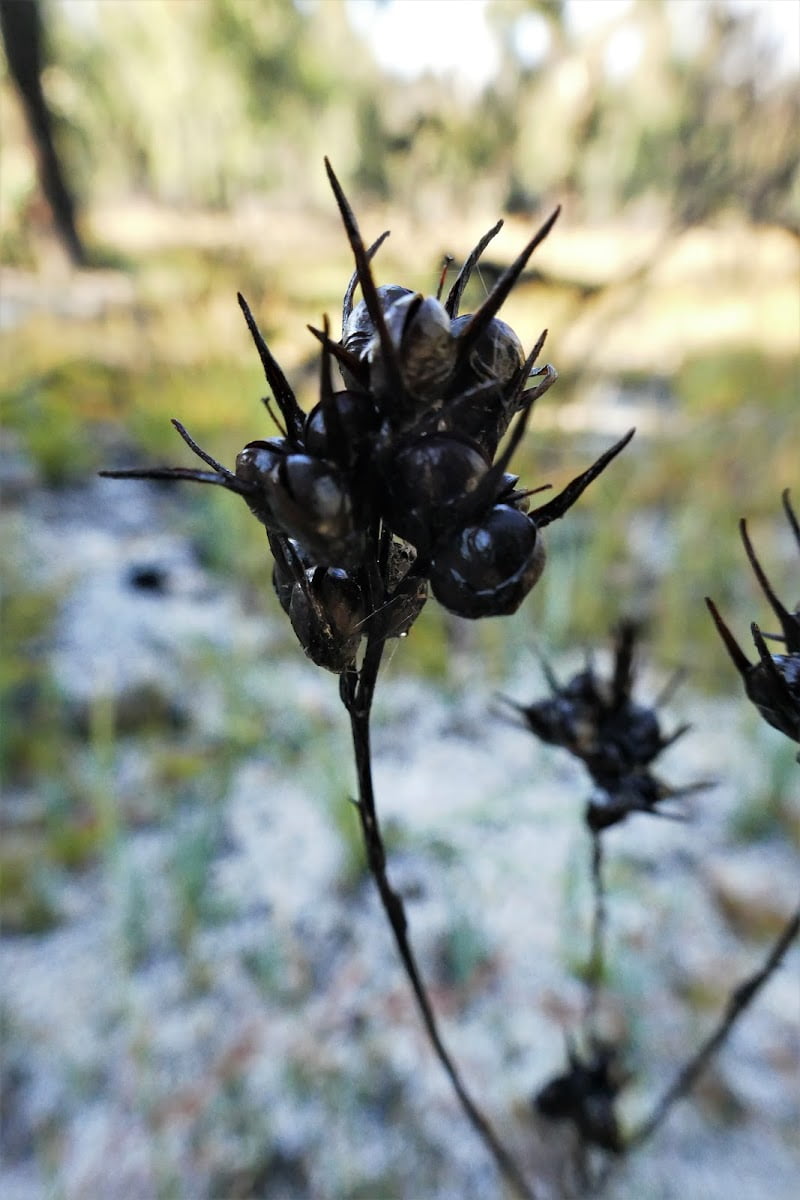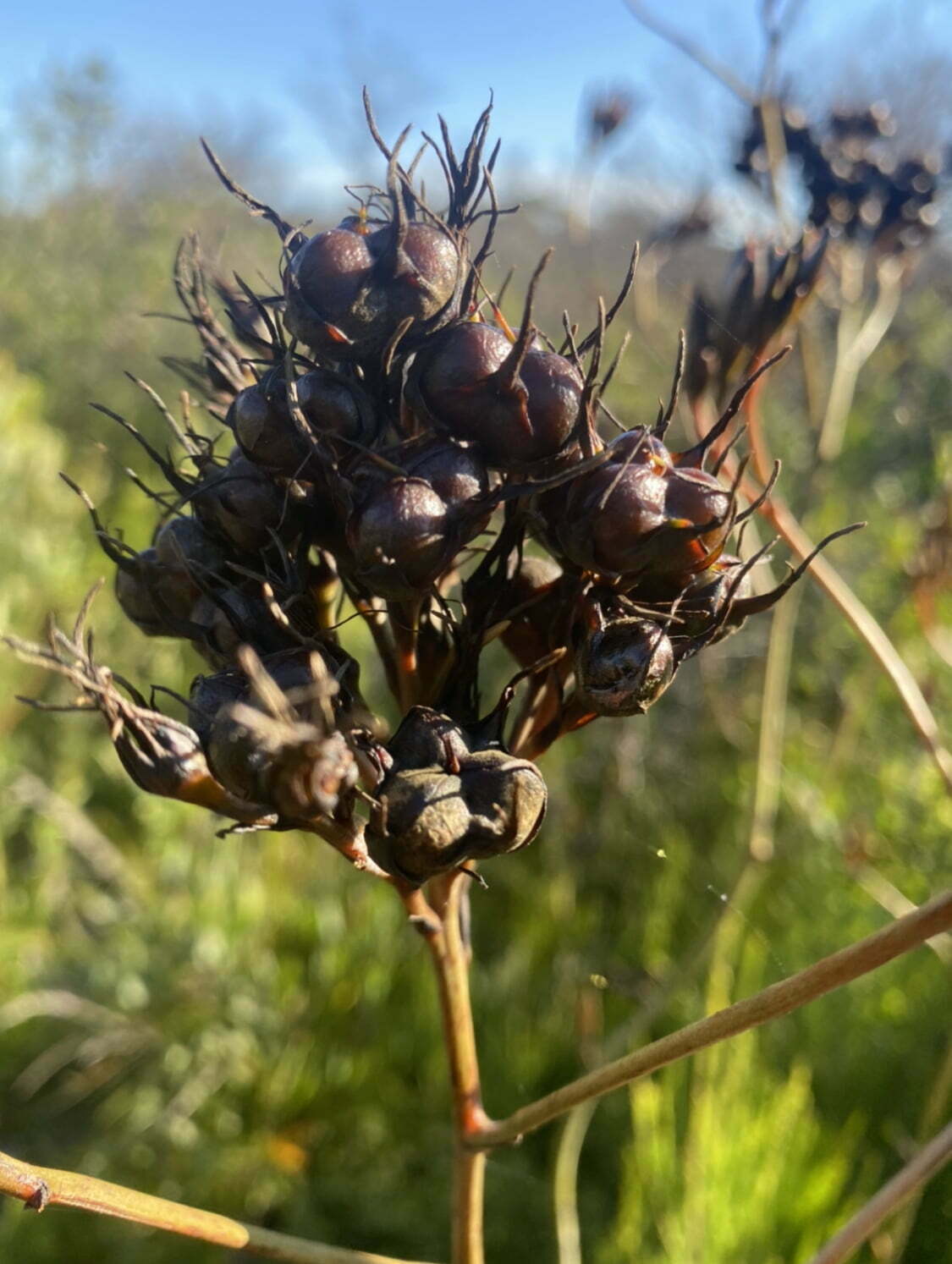
Haemodorum planifolium
Common name: Bloodroot
I grow best: Enjoys coastal areas and sandy well draining soils
•Can grow in full sun to part shade
•Height up to 1.3m
•Width up to 1m
•Flowers – Spring/Summer, Australian native
Looks like: Commonly known as “bloodroot lily” (also blood-root) and “strap-leaf bloodroot”, is a perennial herbaceous flowering plant in the family Haemodoraceae. The flowering stem can grow up to a metre tall, and flowers are black, 1-1.5cm long, in branched clusters on tall hairless stems that are reddish at the base. The seed cases are also black, as shown with this spotting.
Habitat & Growing: Haemodorum planifolium is a shrub native to southeastern Australia and is a perennial herbaceous flowering plant in the family Haemodoraceae. An Australian native, it is endemic to QLD and NSW. Spotted along the Racecourse Creek Track in Girraween National Park, southeast Queensland. Dry sclerophyll forest with sandy granite soils, substantial undergrowth and accumulated leaf litter. Sunny aspect, and looking fresh after recent rain.
Distribution:

Traditional uses: This species has a couple of interesting uses. It is known as a “bloodwort” as a red dye can be made from its roots. Also noted as being used for an anti-venom. Nobody knows how these plants are pollinated. In hard times the roots were eaten after careful preparation, including pounding, mixing with earth and other ingredients, and roasted — and even then, it was called “Mean fare” as it was barely edible, sometimes causing tongues to crack grievously. Eating this plant is therefore not recommended.

